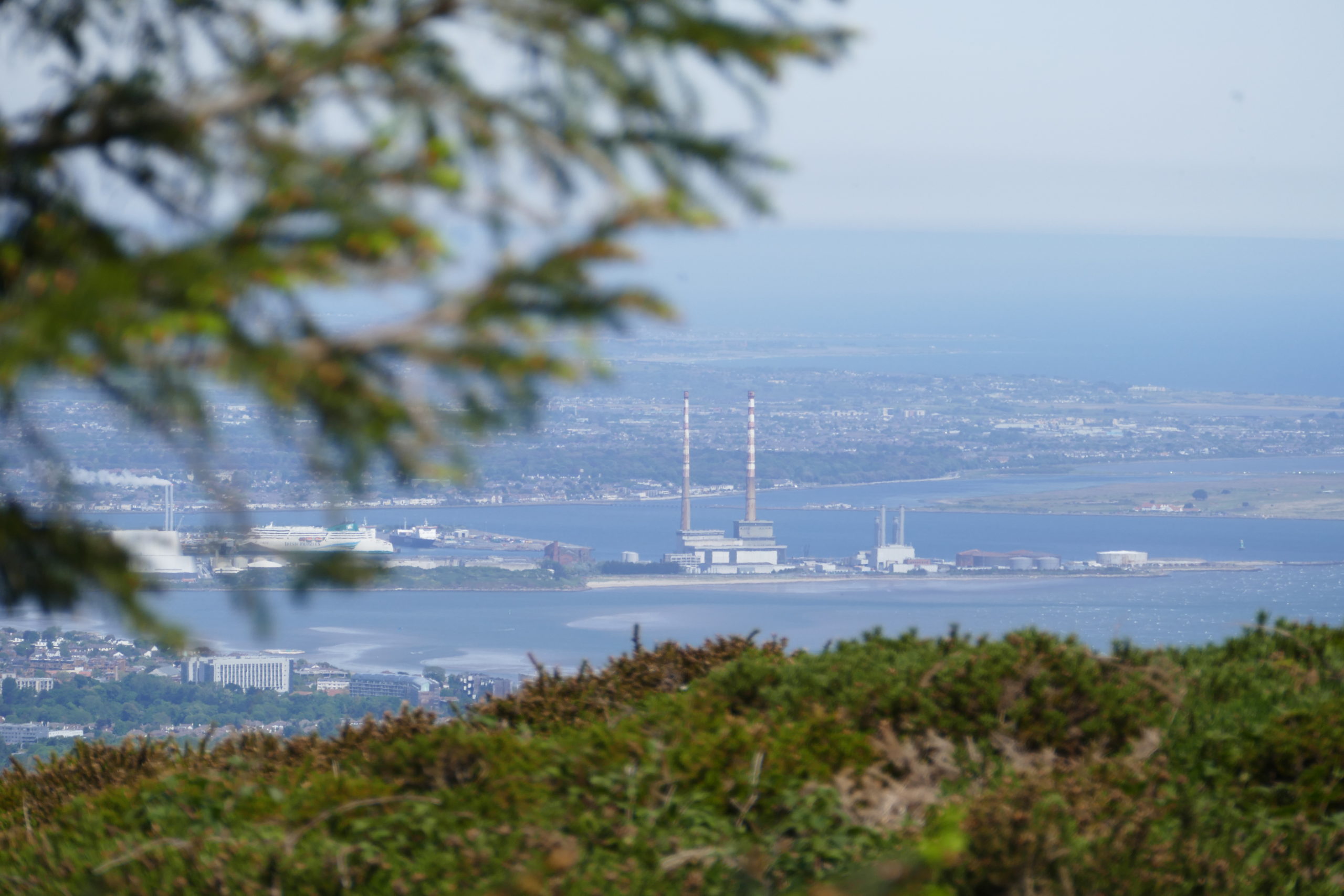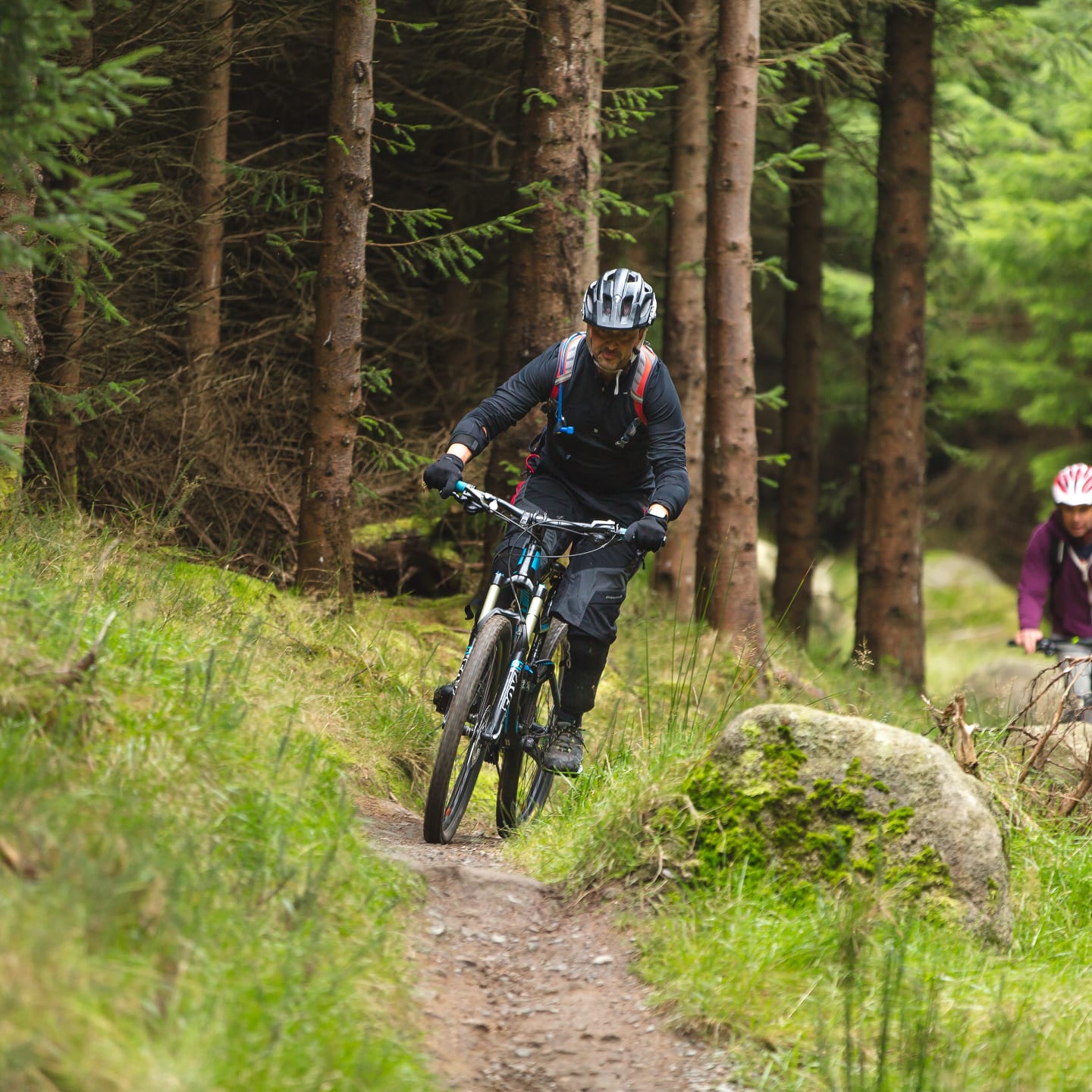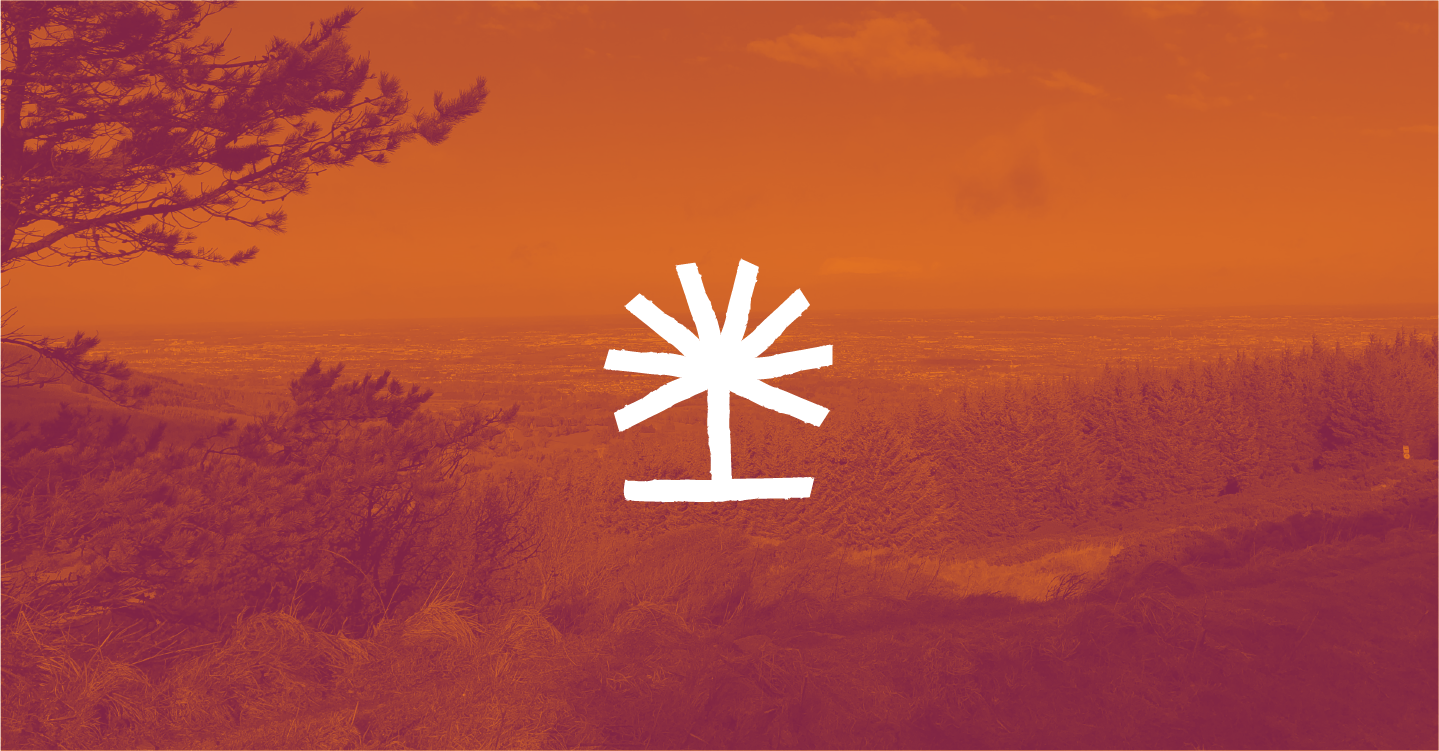What kinds of trees are in the Dublin Mountains?
In this blog, we outline the different kinds of tree species you’ll find in the Dublin Mountains forests, and what the Dublin Mountains Makeover means for them.
Have you heard the story that, once upon a time, the great natural woodlands of Ireland were so extensive that a squirrel could travel from Kerry to Donegal without touching the ground? We don’t know if this story is exactly true, but the idea that it expresses – the scale and extent of the ancient virgin forest that once almost totally blanketed the island – most definitely is.
Along with other plants, insects, fungi, birds and mammals, native trees arrived in Ireland of their own accord many thousands of years ago and, over time, they developed a complex set of connections that ecologists call an ecosystem. A willow tree, for instance, supports over 220 insects across its life cycle. Many birds will eat those insects, and bigger birds will eat the smaller birds. This is just one small segment of the web of life in a native Irish woodland.
In Ireland today, around 11% of our land area is under trees. This level of tree cover may be among the lowest in Europe, but it’s the highest we’ve had in Ireland for 350 years. The majority (over 70%) are productive forests that are optimised to generate a crop for the timber industry. Why? A century ago, Ireland was essentially deforested, with less than 1% of the country under trees. Foresters seeking to grow a commercial resource tried to figure out which was the best species for the Irish climate. They wanted something that would grow quickly and be easy to establish on a wide variety of site types, especially the poorer soils of exposed hillsides, which were not in competition for agricultural production.
After decades of experimentation in the first half of the 20th Century, they came to the conclusion that the best species to generate the kind of timber the market wanted was Sitka spruce – an evergreen conifer that is native to northwestern America. Sitka spruce became the species of choice in Irish timber forests, and today this crop supports a significant industry.
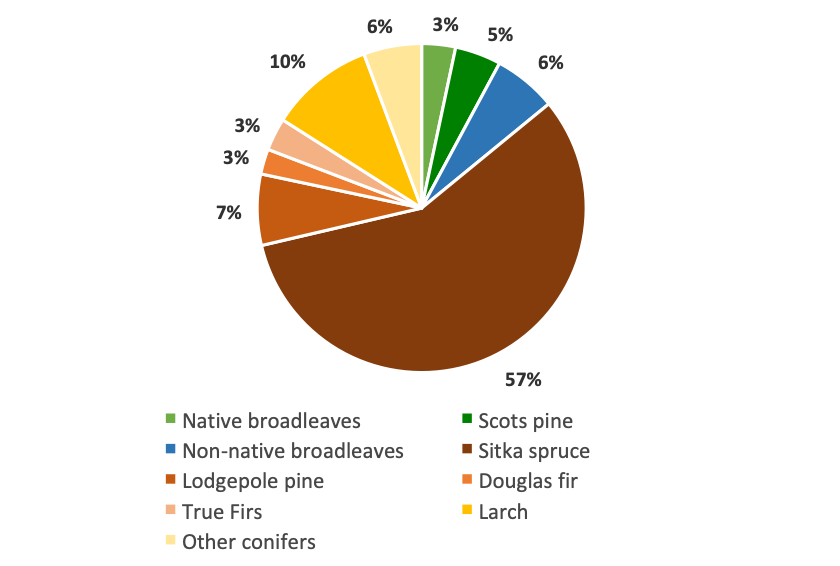
Fig. 1 Shows the proportions of different tree species across the Dublin Mountains
The Dublin Mountains were planted with timber in mind
Most (but not all) of the forests in the Dublin Mountains were planted with timber in mind, so it’ll be no surprise to learn that, overall, 57% of them is Sitka spruce (see Fig. 1, above). Like other popular non-natives such as beech, sycamore, lime and larch, Sitka spruce does not have the natural connections to Irish wildlife that native trees have. The biodiversity associated with them is low relative to native species like willow, rowan and birch, and the planting patterns that make them an excellent source of timber mean that there is a lot of shade in the forest, so the diverse understorey of plants that would ordinarily be there (and home to a wide variety of species) is almost entirely absent.
The timber forests in the Dublin Mountains are very popular with the many people who visit them. Some of these stands of trees are among the oldest anywhere in the landscape, and the sheer size of them can be very impressive. Meanwhile the lack of understorey makes it easy to wander through the trees, build dens and have a lot of fun mountain biking on the dedicated MTB trails in places like Ticknock – the most popular forest in the whole country.
Coillte Nature wants to improve these forests by enhancing the condition of the habitats to make the forests more diverse, in terms of both species and structure. Doing this will make them better for people and nature too, and that’s what the Dublin Mountains Makeover is all about. In this blog, we want to tell you about the species are currently in each of the Dublin Mountains forests, and what we’ll be adding.
Currently, 92% of the forests in the Dublin Mountains Makeover are comprised of non-native species: 57% is Sitka spruce, with a further 10% larch, 7% lodgepole pine, 12% firs and other conifers, and a further 6% non-native broadleaves like beech and sycamore. Only 5% of the area is under native conifers (Scots pine) and 3% is under native broadleaves like birch, oak, rowan, ash and alder. These kinds of proportions are fairly consistent across the majority of the nine forests in the Dublin Mountains Makeover, though there are a few exceptions.
In Coillte, three broad categories are used to describe the different types of forest found in the Dublin Mountains:
- Conifer High Forest (CHF) – tall, evergreen conifer forests. Can include both native (e.g. Scots pine) and non-native species
- Broadleaf High Forest (BHF) – tall, deciduous broadleaf forests. Can include both native and non-native species
- Mixed High Forest (MHF) – a mix of conifers and broadleaves. Can include both native and non-native species
The current forest type proportions in the Dublin Mountains are: Conifer High Forest 86%, Broadleaf High Forest 7%, and Mixed High Forest 7%. Over the next 20 years, the Dublin Mountains Makeover will transform these proportions to Broadleaf High Forest 32% (+25%, much of which will be native species), Conifer High Forest 58% (-28%) and Mixed High Forest 10% (+3%).
Each forest in the Makeover is described below, going from west to east:
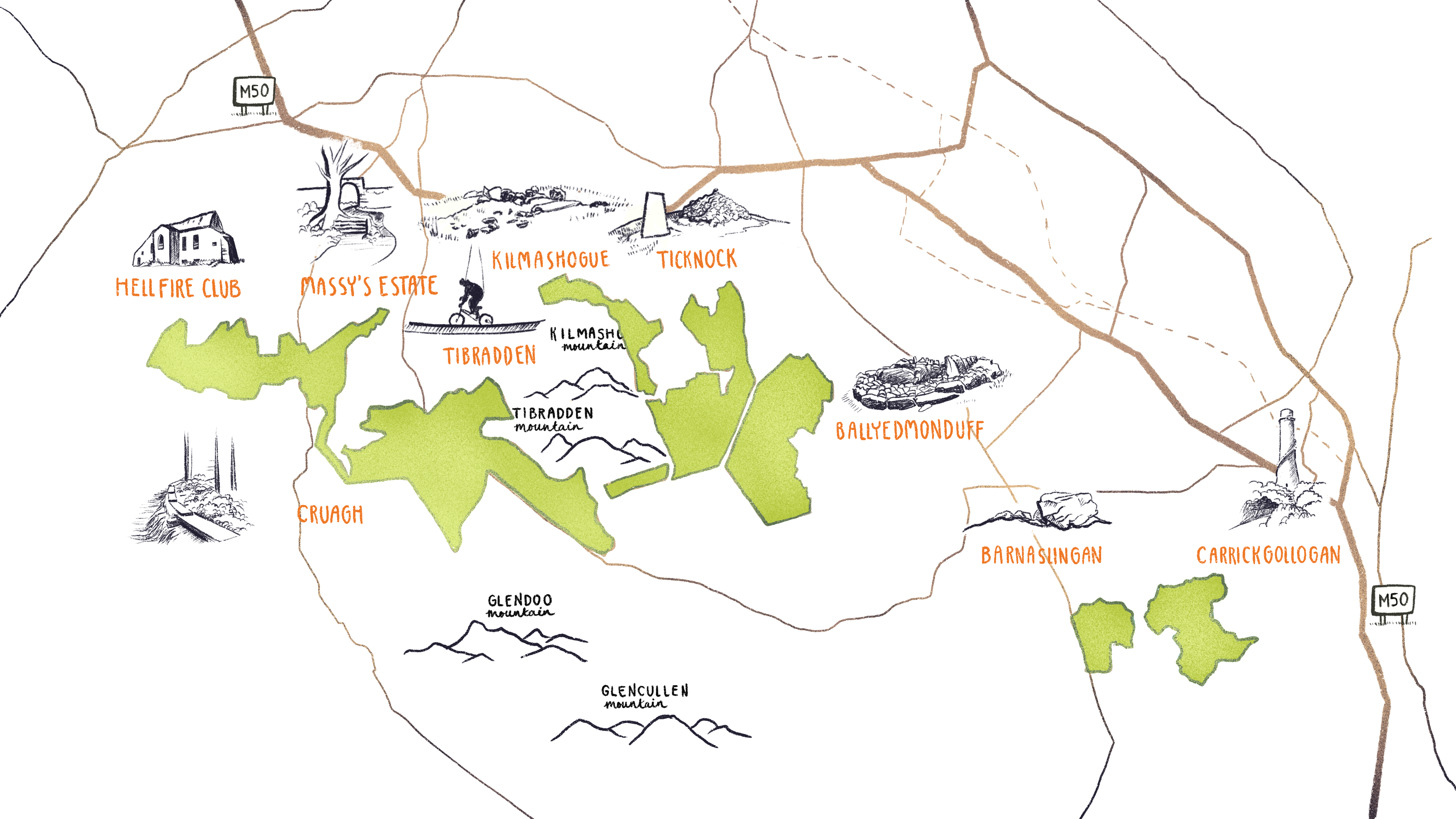
The Hellfire Club is 97% non-native species. It has the second-highest proportion of Sitka spruce (79%) of any forest in the Makeover. Other species include larch (8%), Douglas fir (5%) and non-native broadleaves (2%). There is a small amount of native broadleaf (3%) but no native conifer (Scots pine).
Makeover Plans: Our plans for the Hellfire are currently on hold until plans for the Visitor Centre are finalised. Around 80% of the Hell Fire Club forest was planted in the last 30 years, so there will be no major change in forest species over the next 20 years.
Massy’s Estate is an exception, with only 74% non-native species. Just over half (51%) is non-native deciduous broadleaves like beech, making it a particularly beautiful forest in autumn, and only 6% is Sitka spruce. There are some other non-native conifers too, including true firs, lodgepole pine and others (14%). Massy’s also has a relatively high proportion of native broadleaves – just over a quarter at 26%.
Makeover Plans: There will be minimal changes in tree species in this forest given the high proportion of beech and other broadleaves already present in this forest. The Makeover Plans will aim to increase biodiversity value by controlling the invasive cherry laurel and improving structural diversity of the forest, rather than changing tree species.
Cruagh is more like the Hellfire – 98% non-native, dominated by Sitka spruce (70%) and other non-native conifers like larch (13%), Douglas fir (4%) and lodgepole pine (4%), as well as some non-native broadleaves (7%). There is a little Scots pine (2%) – Ireland’s only native conifer tree – and no native broadleaves.
Makeover Plans: In 2020, we will thin 24 hectares of larch and Sitka spruce using Continuous Cover Forestry principles (learn more about CCF), and through this we will increase the proportion of native tree species by underplanting groups of native trees in the bigger gaps beneath the larch canopy. We also plan to fell 8.4 hectares of mature Sitka spruce and replant it with a native pioneer birch woodland comprising a mix of birch, Scots pine, oak and rowan, plus other minor species such as whitebeam, aspen, hawthorn and willow.
Tibradden is also largely non-native at 92%, comprising Sitka spruce (57%), lodgepole pine (13%), larch (10%) and other conifers (11%). There’s some native Scots pine conifers, too (8%).
Makeover Plans: Over the next five years, we will fell 7 hectares of mature spruce and replant it with native woodland. A further 35 hectares will be thinned over time under Continuous Cover Forestry principles.
Kilmashogue is 100% non-native, with a lot of Sitka spruce (68%) and almost a quarter larch (22%). The remaining portion is non-native broadleaves (6%) and other conifers (4%).
Makeover Plans: Here, about 80% of the forest was planted in the last 30 years. Over the next 20 years of the Makeover, this forest will be thinned using Continuous Cover Forestry principles to create the conditions for regeneration of spruce and native broadleaf trees to gradually move to a more mixed high forest.
Ticknock, the most popular forest in the country, is also almost entirely non-native (98%). It’s dominated by Sitka spruce (71%), lodgepole pine (10%), larch (7%), true firs (4%) and other conifers (5%), but there are some non-native broadleaves like beech (1%) and a small amount of native broadleaves like birch (2%).
Makeover Plans: We’ve already started removing an area of windblown Sitka spruce trees near the car park. In winter 2020, we’ll be fencing the area and planting it with native woodland. In the coming years, we will continue to convert another 12 hectares of mature Sitka spruce and pine to native woodland.
Ballyedmonduff is also 100% non-native. It has the highest proportion of Sitka spruce of any forest in the Makeover at 89%, as well as some larch (4%), lodgepole pine (4%), other conifers (2%) and true firs (1%).
Makeover Plans: We’ve already started our work in Ballyedmonduff. In July 2020, Continuous Cover Forestry harvesting commenced in 21 hectares of Sitka spruce timber forest. Later this year, we’ll also remove 6 hectares of windblown Sitka spruce trees and replant them with a mix of Sitka spruce, birch and rowan. In the coming years, we’ll remove 5 hectares of mature Sitka spruce and replant it with native woodland.
Barnaslingan is a very different forest. While 71% non-native, it features no Sitka spruce and a good proportion of broadleaves (total 13%, of which 6% is native, 7% is non-native). It also has a wider variety of conifers, including a lots of Scots pine (native, 23%), other conifers including Corsican and Monterey pines (20%), true firs (17%), larch (17%), Douglas fir (6%), and lodgepole pine (3%). Here, the pines and Douglas fir create a more open canopy, which allows an understorey of native trees and shrubs to develop. You can see these as you walk around Barnaslingan.
Makeover Plans: There are plans to do a CCF thinning in 28 hectares of pine, fir and beech forest to encourage regeneration of native broadleaf species (through natural methods and some underplanting of groups of native trees). This will further improve the structural diversity of the forest. Natural regeneration of the exotic conifers already taking place will be removed to favour native species.
Carrickgollogan is similar to Barnaslingan. It’s 79% non-native, but these include a wide range of conifer species like lodgepole pine (20%), Sitka spruce (16%), Douglas fir (11%), other conifers (11%), larch (9%), true firs (7%), plus 5% non-native broadleaves. There’s also 6% of native broadleaves and a high proportion of Scots pine (15%), our only native conifer.
Makeover Plans: Carickgollogan suffered extensive fire damage in 2018 on 20 hectares of forest. We’re transforming this damaged area by removing the remaining trees and replanting with native woodland in 2020. This will significantly increase the proportion of native woodland in Carrickgollogan.
